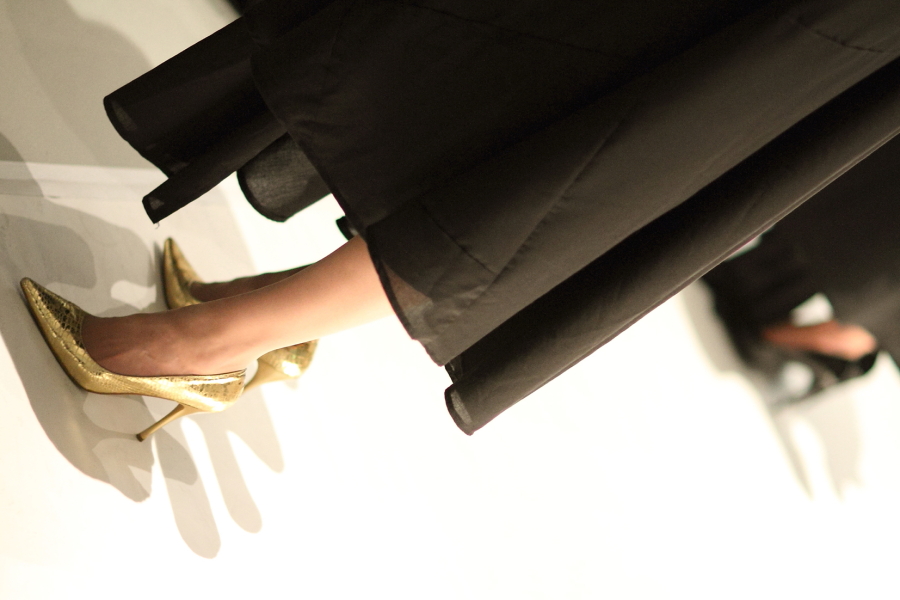Women In Shadow
SOUTH AUSTRALIAN artist Nasim Nasr's art practice actively engages complex notions of identity, with a particular focus on her native country Iran. Drawing from experiences as a young woman living in Tehran, set against the cultural contrast gained while living in Australia since 2009, her practice has experimented with photographing women in various forms of oppressive coverings in Western cultural contexts, exploring issues of the chador, “erasure”, “the gaze” and “shadow”, in an ongoing body of work titled Women in Shadow.
For the AEAF, Nasr presented a powerful one-night event in the guise of a fashion parade, using this familiar though privileged celebration of commerce and beauty as a format for this conceptual artwork. Circumscribed by issues of identity politics this performance considers women as ‘Other’, by overtly erasing signs personal identity and character. By utilising the chador, the performance presents its own paradox, of being seen without being seen. It is Nasr's belief that "when artists and audiences are veiled by their differing traditions and backgrounds, the visual language of art can become the lingua franca."
Of her work Nasr has stated, "all utility garments create their own conventions and special powers. The image of the shroud, commonly associated with the chador, unleashes in those external to such cultures a variety of reactions relating to issues of belief, ‘the taboo’ and what constitutes the 'boundary'.
When individuals move from one culture to another, whether involuntarily or through a conscious decision, the coherent conveying of one's identity through the acquired language of a new context can become a multifaceted challenge. Individual as well as broad cultural histories are extremely complex phenomena to capture, and consequently to express. The video works I have made consider this complex notion of those cultural identities that do not claim validation through seeking originality. Rather, these cultures perceive identity as a transient invention. My practice seeks to represent not only the socio-cultural invisibility of women in Iran but also their disempowerment, that fades them into shadow."
This exhibition at the aeaf was supported by Tanya Powell Model Agency and the University of South Australia Art, Architecture and Design School
Video Documentation of the performance Women In Shadow, at the Australian Experimental Art Foundation, 201
Performance Documentation (Stills)












